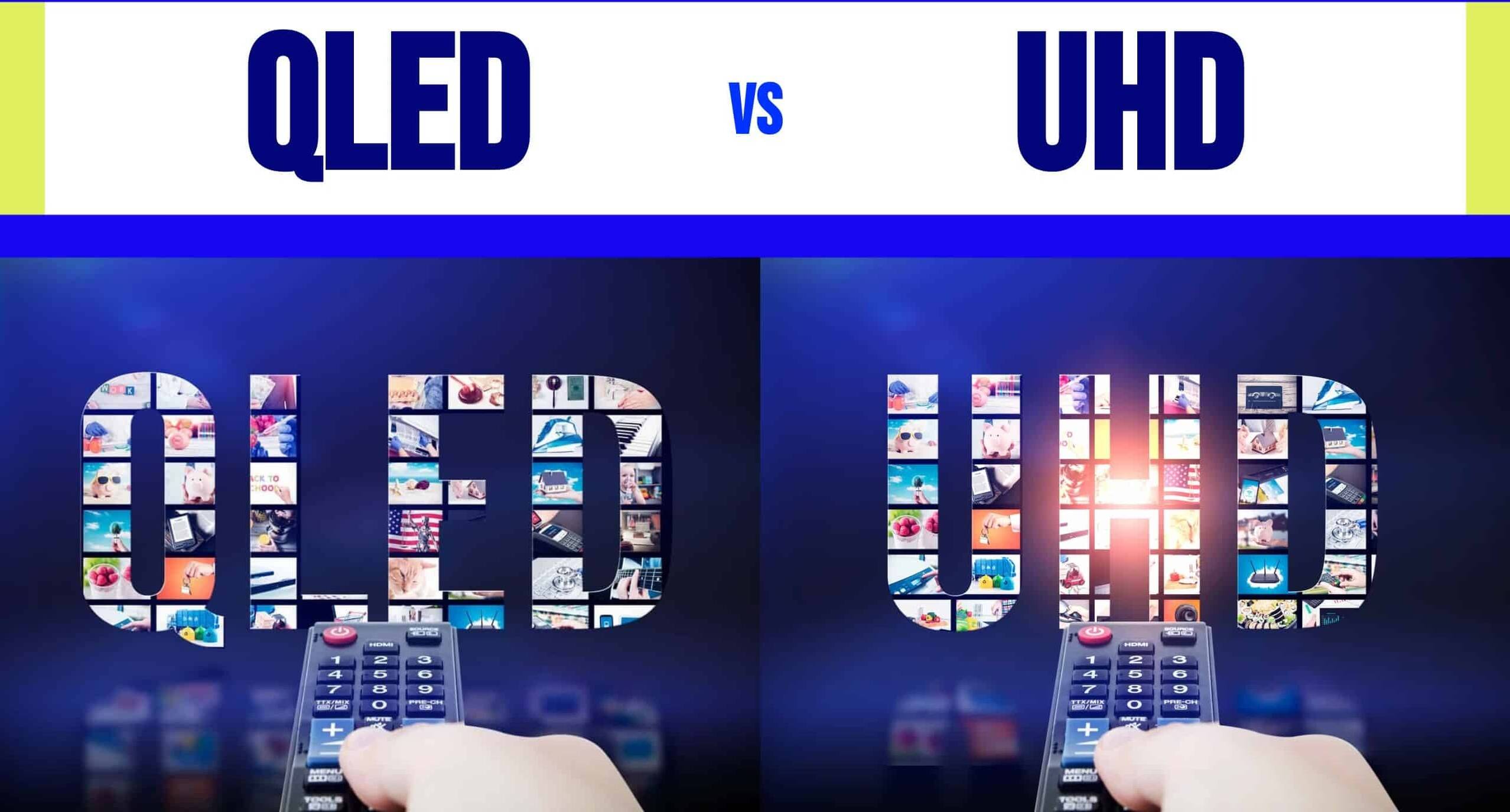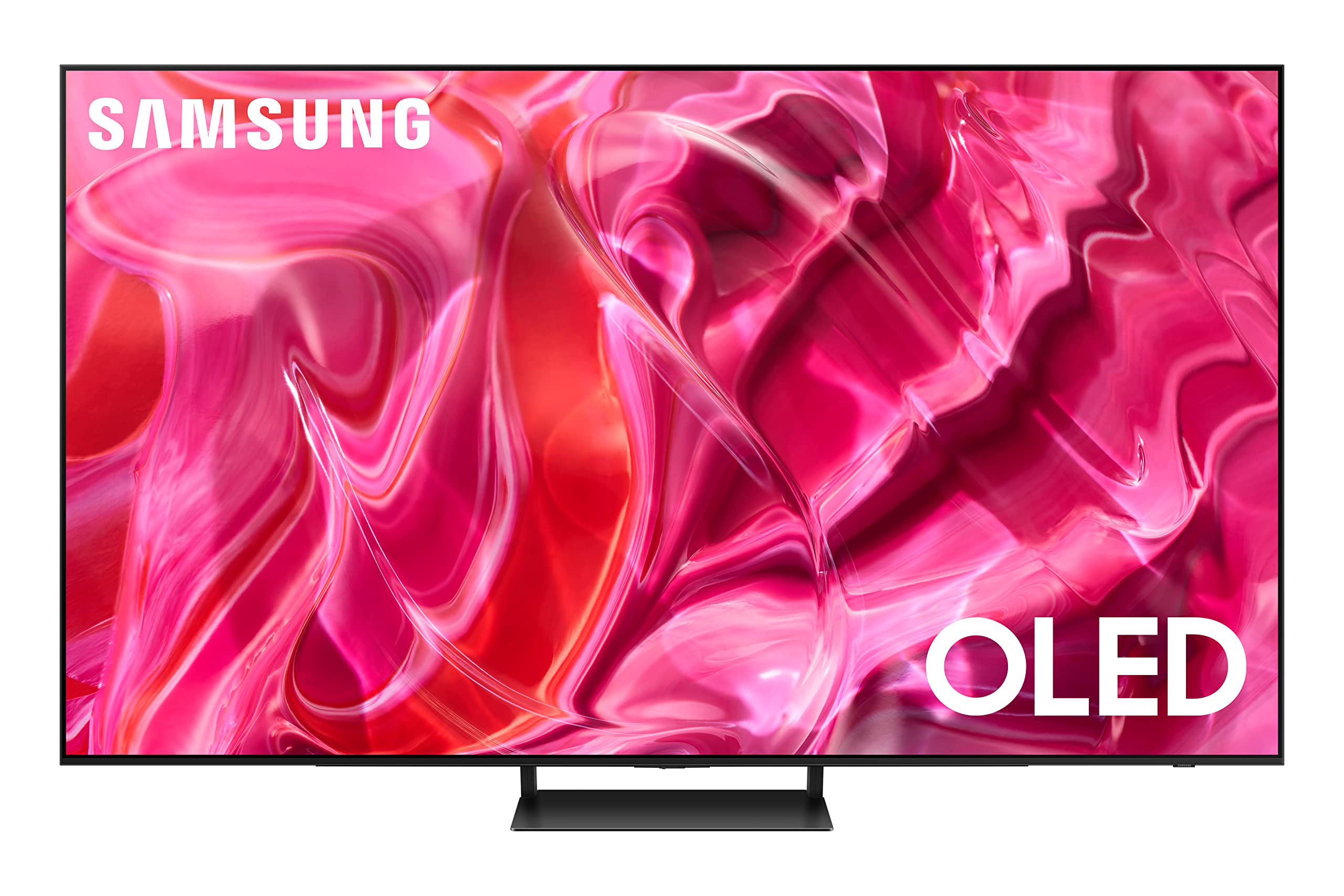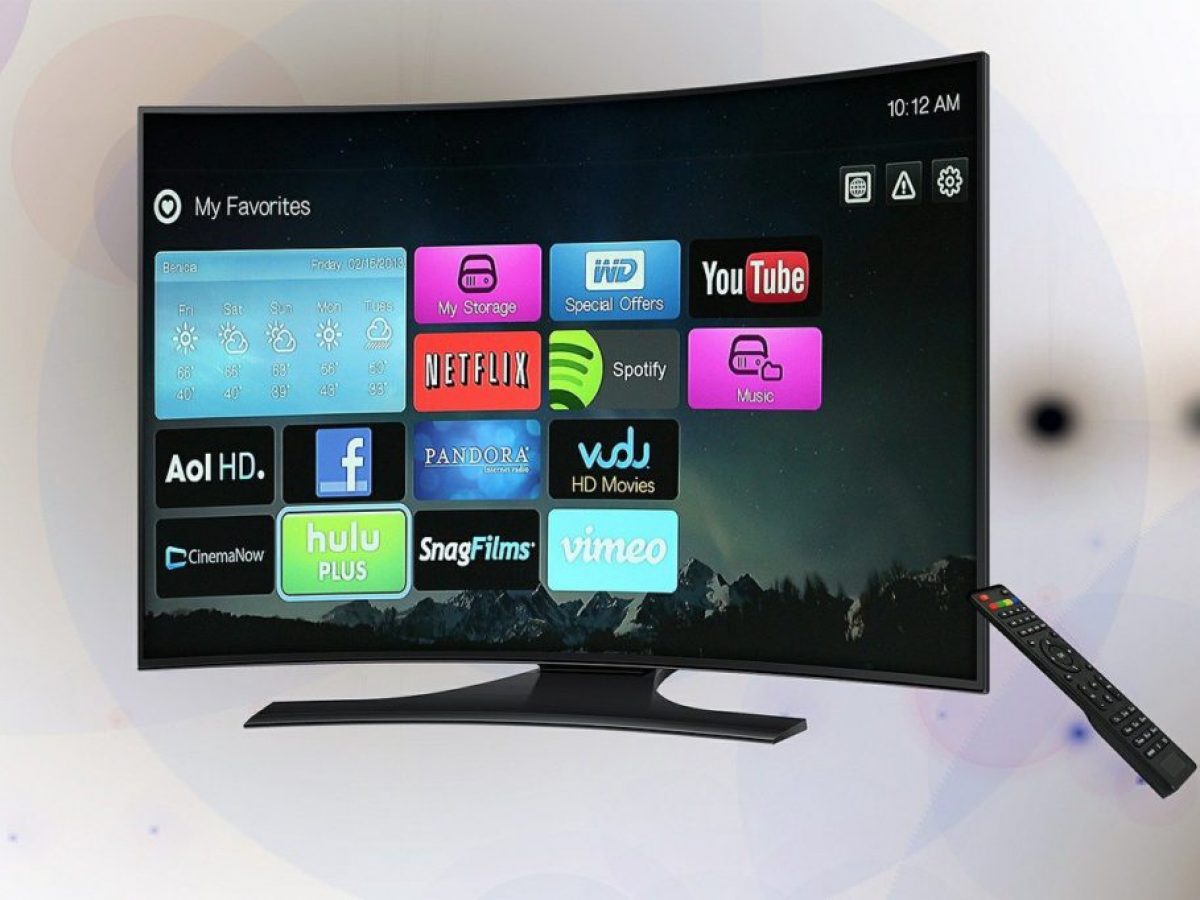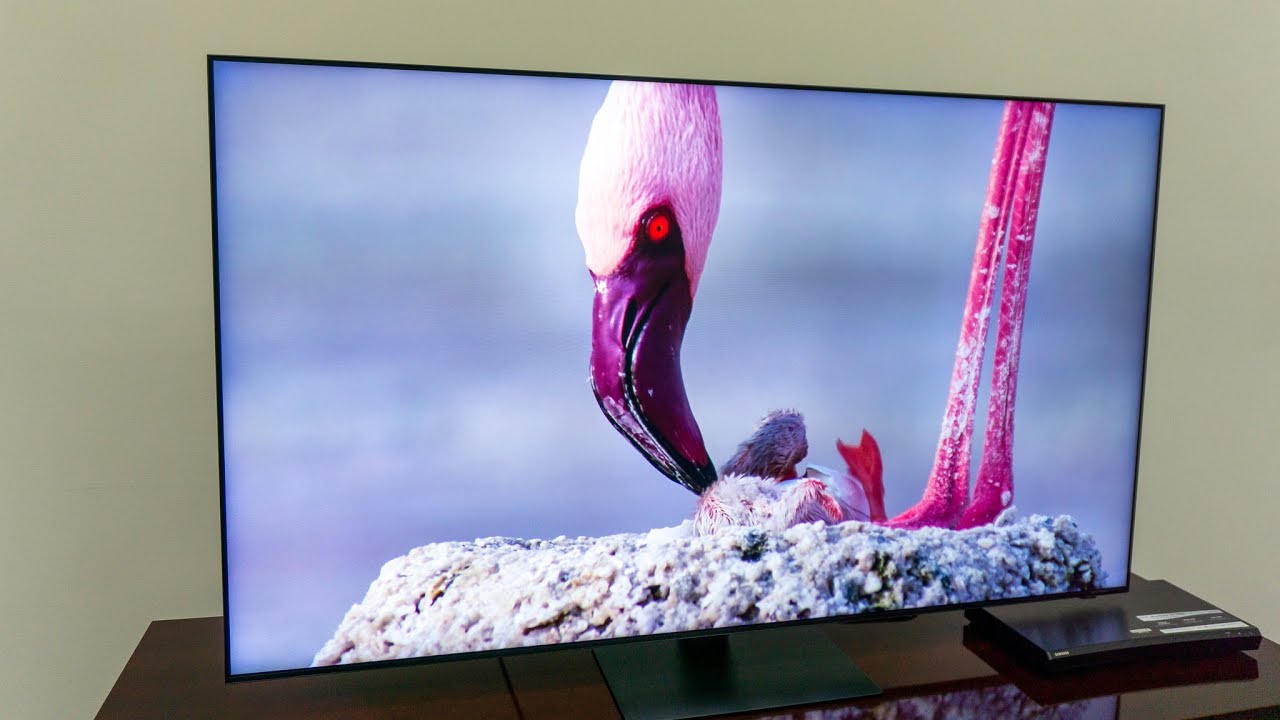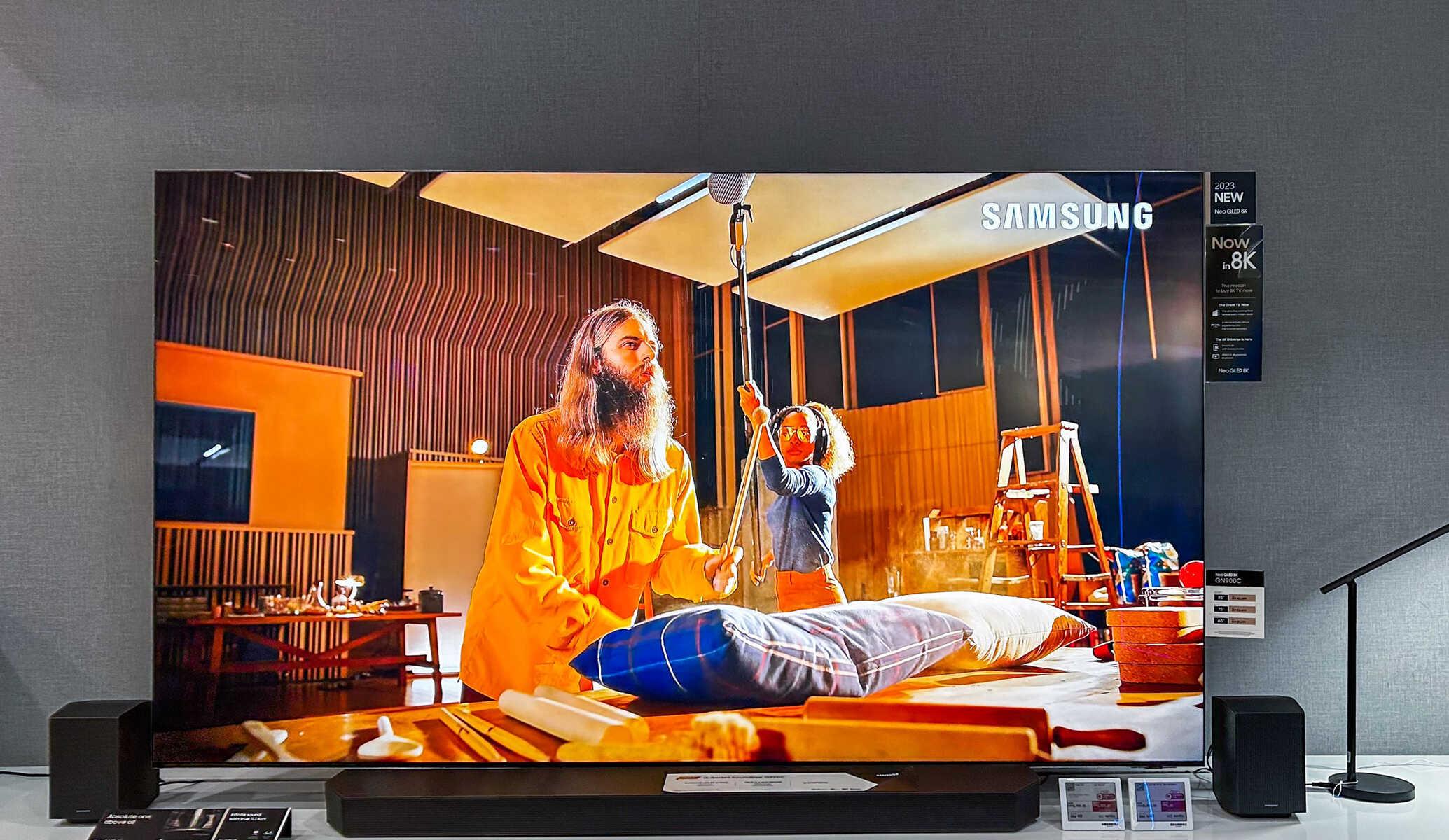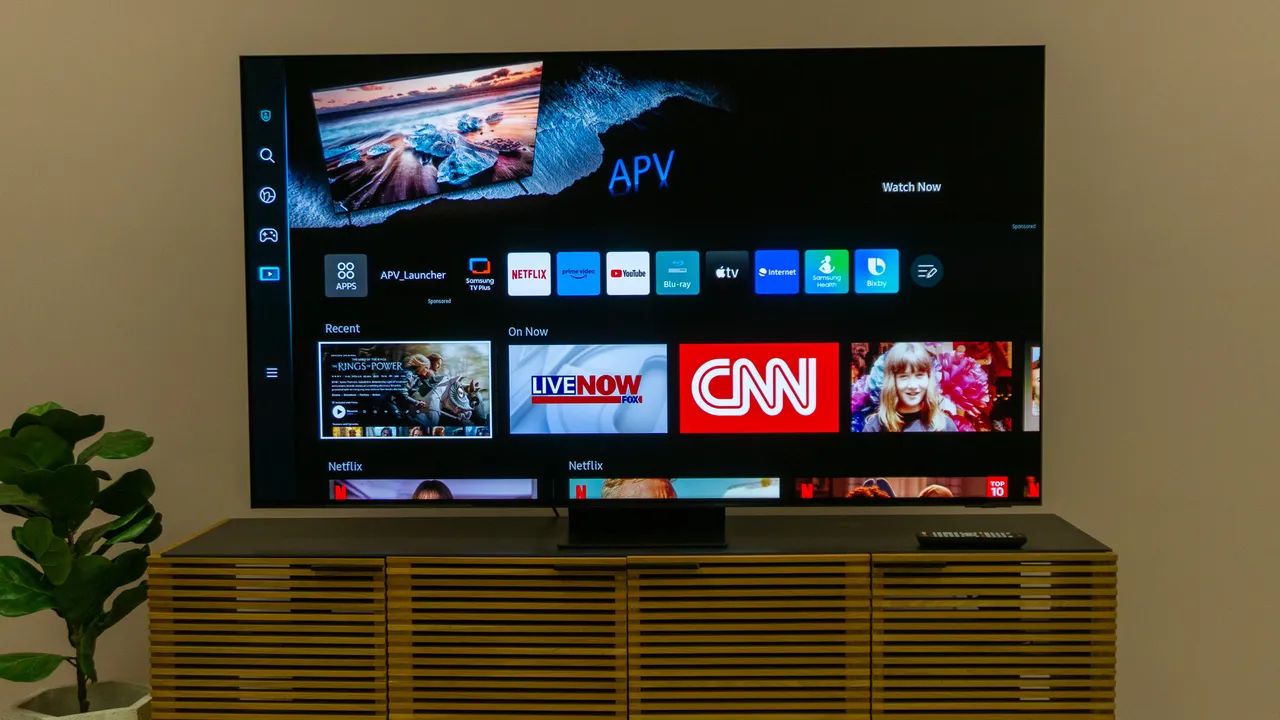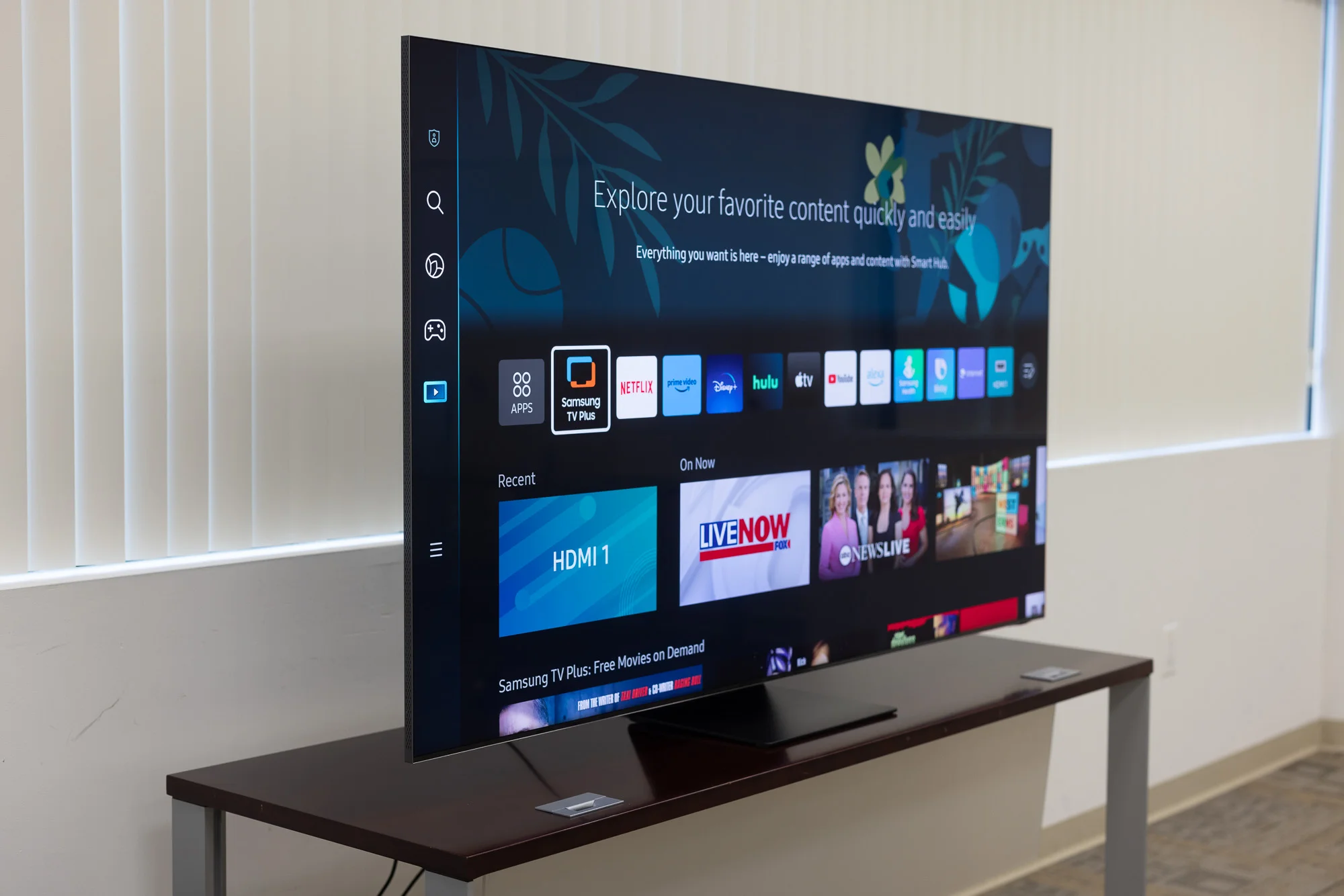Introduction
With the rapid advancement of technology, the world of television has seen tremendous upgrades in recent years. Two popular options in the market today are Ultra High Definition (UHD) TVs and Quantum Light Emitting Diode (QLED) TVs. These cutting-edge technologies bring about significant improvements in picture quality, color reproduction, and contrast ratios, offering viewers a truly immersive and captivating home entertainment experience.
UHD TVs, also known as 4K TVs, have revolutionized the way we watch movies, TV series, and sports events. These televisions boast an impressive resolution of 3840×2160 pixels, providing four times the pixel density of traditional Full HD TVs. This means sharper images, finer details, and a more realistic picture. On the other hand, QLED TVs utilize quantum dot technology, which enhances color reproduction and brightness levels, resulting in vibrant and highly accurate images.
In this article, we will explore the differences between UHD TVs and QLED TVs, comparing their picture quality, color reproduction, contrast ratios, viewing angles, energy efficiency, gaming performance, and price. By understanding these distinctions, you will be equipped with the knowledge to make an informed decision when choosing a television for your home.
Before diving into the details, it’s worth noting that both UHD and QLED TVs offer remarkable improvements over traditional TVs. Therefore, regardless of your choice, you can expect a significant upgrade in visual quality.
UHD TV
UHD TVs, or 4K TVs, have become increasingly popular in recent years due to their exceptional picture quality and immersive viewing experience. These televisions boast a resolution of 3840×2160 pixels, which delivers four times the pixel density of Full HD TVs.
The higher pixel density of UHD TVs ensures sharper and more detailed images. It allows you to see the finer textures, intricate details, and subtle nuances that might be missed on a lower-resolution display. This increased level of detail creates a more lifelike and realistic viewing experience, whether you’re watching movies, TV shows, or playing video games.
Another advantage of UHD TVs is the wider color gamut they offer. With a broader range of colors, UHD TVs can display more vibrant and accurate hues, leading to a more visually stunning image. This enhanced color reproduction enhances the overall viewing experience, making the colors appear more vivid and lifelike.
Furthermore, UHD TVs often have better contrast ratios compared to their lower-resolution counterparts. This means that the distinction between light and dark areas on the screen is more pronounced, resulting in deeper blacks and brighter whites. The enhanced contrast ratios create a more immersive and dynamic visual experience.
It’s worth noting that to fully appreciate the benefits of UHD TVs, you should have access to 4K content. Fortunately, streaming services like Netflix, Amazon Prime Video, and Disney+ offer a wide range of movies and TV shows in 4K resolution. Additionally, many Blu-ray discs and gaming consoles also support UHD resolution, allowing you to experience the full potential of your UHD TV.
In summary, UHD TVs provide a significant upgrade in picture quality with their higher resolution, wider color gamut, and improved contrast ratios. They offer a more detailed, vibrant, and immersive viewing experience, bringing your favorite content to life in a whole new way.
QLED TV
QLED TVs, which utilize Quantum Dot technology, are known for their exceptional color reproduction and brightness levels. This innovative technology enhances the viewing experience by delivering more vivid and accurate colors.
The Quantum Dot technology used in QLED TVs allows for a wider color gamut and improved color accuracy. It achieves this by using tiny semiconductor nanocrystals, or quantum dots, that emit different colors based on their size. This precise control over color production results in more vibrant and lifelike images on the screen.
In addition to enhanced color reproduction, QLED TVs also offer impressive brightness levels. With LED backlighting, the light emitted by the TV can be precisely controlled, leading to brighter whites and increased overall brightness. This feature is particularly beneficial when viewing content in a well-lit room or during daylight hours.
Another advantage of QLED TVs is their ability to maintain color accuracy and image quality even when viewed from different angles. The wide viewing angles ensure that everyone in the room can enjoy a consistent and immersive viewing experience, regardless of their position relative to the screen. This is a significant improvement compared to older LCD and LED TVs, which tend to suffer from color and brightness degradation when viewed off-center.
Additionally, QLED TVs often have impressive contrast ratios, thanks to the combination of Quantum Dot technology and local dimming features. Local dimming allows different parts of the screen to be dimmed or brightened independently, resulting in deeper blacks and more pronounced contrast between light and dark areas.
It’s important to note that QLED TVs are energy-efficient compared to other display technologies. The LED backlighting used in QLED TVs consumes less power than older LCD technologies, leading to a more eco-friendly and cost-effective viewing experience.
In summary, QLED TVs excel in color reproduction, brightness levels, viewing angles, and contrast ratios. With their Quantum Dot technology and advanced display features, QLED TVs deliver vibrant and accurate images from any angle, ensuring a visually stunning and immersive viewing experience.
Picture Quality
When it comes to television technology, one of the most important factors for many viewers is picture quality. Both UHD and QLED TVs offer significant improvements over traditional TVs, but there are some differences worth considering.
UHD TVs, also known as 4K TVs, have a resolution of 3840×2160 pixels, providing four times the pixel density of Full HD TVs. This higher resolution results in sharper images with more detailed textures, offering a more lifelike and immersive viewing experience. With UHD TVs, you can easily distinguish fine details that may be missed on lower-resolution displays, allowing you to enjoy movies, TV shows, and games with stunning clarity.
On the other hand, QLED TVs utilize Quantum Dot technology, which enhances color reproduction and brightness levels. This technology enables QLED TVs to deliver more vibrant and accurate colors, resulting in a visually stunning picture. The use of LED backlighting in QLED TVs also contributes to brighter whites and increased overall brightness, allowing for a more impactful visual experience.
Another aspect to consider is the contrast ratio. UHD TVs often have better contrast ratios compared to QLED TVs, as they use various technologies, such as local dimming, to enhance the distinction between light and dark areas on the screen. This leads to deeper blacks and brighter whites, creating a more immersive visual experience with greater depth and detail.
When comparing viewing angles, QLED TVs have an advantage. They are designed to maintain color accuracy and image quality even when viewed from different angles. This ensures that everyone in the room can enjoy crisp and vivid visuals, regardless of their position relative to the screen. UHD TVs, while still providing excellent picture quality, may exhibit color and brightness degradation when viewed off-center.
Ultimately, both UHD and QLED TVs offer exceptional picture quality. UHD TVs excel in sharpness, detail, and contrast, while QLED TVs enhance color reproduction, brightness, and wide viewing angles. The choice between the two depends on your priorities and viewing preferences.
Color Reproduction
Color reproduction is a crucial aspect of any television, as it directly impacts the visual quality and realism of the displayed content. Both UHD and QLED TVs strive to provide accurate and vibrant colors, but they achieve this in different ways.
UHD TVs, with their 4K resolution, offer a wider color gamut compared to traditional HD TVs. This means they are capable of reproducing a larger range of colors, resulting in more vivid and lifelike images. The expanded color palette of UHD TVs enhances the viewing experience by accurately reproducing the subtle nuances of colors, making the content appear more realistic and engaging.
On the other hand, QLED TVs utilize Quantum Dot technology to deliver exceptional color reproduction. Quantum dots are microscopic nanocrystals that emit light of specific colors when stimulated. This technology allows QLED TVs to display a wider range of vibrant colors with precise accuracy. The result is a more visually striking image with rich and accurate hues that closely resemble the original content.
QLED TVs also benefit from the use of LED backlighting, which further enhances color reproduction. The LED backlighting used in QLED panels can be precisely controlled, allowing for more accurate color representation. This is particularly noticeable in scenes with subtle color variations, such as sunsets or underwater scenes, where QLED TVs can deliver a more realistic and immersive viewing experience.
Another advantage of QLED TVs in color reproduction is their ability to maintain color accuracy even at high brightness levels. This means that whether you’re watching a brightly lit outdoor scene or a nighttime scene with deep shadows, the colors will remain vibrant and true to life.
It’s worth noting that the overall color reproduction can also be influenced by factors such as the source content and the settings of the television. Calibration settings and picture modes should be adjusted to suit personal preferences and viewing conditions, ensuring the most accurate and pleasing color reproduction for each individual.
In summary, both UHD and QLED TVs strive to deliver accurate and vibrant colors. UHD TVs achieve this through their high resolution and wider color gamut, while QLED TVs utilize Quantum Dot technology and LED backlighting to produce rich and accurate hues. The choice between the two depends on the level of color accuracy and vibrancy you seek for your viewing experience.
Contrast Ratio
The contrast ratio of a television is a crucial factor in determining the visual quality and depth of the displayed content. It refers to the difference between the brightest whites and the darkest blacks a TV can produce. Both UHD and QLED TVs implement technologies to enhance contrast ratios, resulting in more immersive and dynamic visuals.
UHD TVs often employ various technologies, such as local dimming, to enhance contrast ratios. Local dimming allows specific areas of the screen to be dimmed or brightened independently, resulting in deeper blacks and brighter whites. This creates a more pronounced distinction between light and dark areas, allowing for greater depth and detail in the image. With a high contrast ratio, UHD TVs can deliver a more immersive viewing experience, especially in scenes with significant variations in brightness.
QLED TVs also excel in contrast ratios, thanks to their advanced display technologies. Quantum Dot technology, combined with local dimming, enables QLED TVs to produce deep blacks and bright whites, resulting in a dramatic difference between light and dark areas on the screen. This enhances the overall picture quality, bringing out finer details and creating a more visually dynamic experience.
It’s important to note that the quality of local dimming can vary across different UHD and QLED TV models. Some televisions employ full-array local dimming, where the LEDs are evenly distributed behind the screen, while others use edge-lit local dimming, where the LEDs are placed around the edges of the panel. Full-array local dimming generally provides better contrast performance by offering more precise control over individual zones, but both methods can still significantly improve contrast ratios compared to traditional LED TVs.
Furthermore, while contrast ratios are impressive on both UHD and QLED TVs, it’s worth considering the overall brightness levels as well. A TV with a higher maximum brightness can enhance the visual impact of bright scenes, while still maintaining deep blacks in darker areas.
In summary, both UHD and QLED TVs excel in contrast ratios, providing a more immersive and visually captivating experience. UHD TVs implement technologies like local dimming to enhance the distinction between light and dark areas, while QLED TVs utilize Quantum Dot technology and local dimming to deliver deep blacks and bright whites. When choosing between the two, it’s essential to consider the specific model and its contrast performance to determine which best fits your preferences.
Viewing Angles
Viewing angles refer to the range of angles from which a television can be viewed without experiencing a significant reduction in picture quality or color accuracy. Both UHD and QLED TVs have made advancements in this area, although there are some differences to be aware of.
QLED TVs are known for their superior viewing angles. The use of Quantum Dot technology enables QLED TVs to maintain excellent color accuracy and image quality, even when viewed from off-center angles. This means that everyone in the room can enjoy a consistent and immersive viewing experience, no matter where they are seated in relation to the screen. The wide viewing angles of QLED TVs ensure that the colors and details remain vibrant and true to life, regardless of the viewer’s position.
On the other hand, UHD TVs, while still providing excellent picture quality, may experience some color and brightness degradation when viewed from off-center angles. This is a common characteristic of traditional LCD and LED TVs. As the viewer moves away from the center of the screen, colors may appear less vibrant or washed out, and the brightness may decrease. The extent of these viewing angle limitations can vary depending on the specific model of UHD TV.
It’s important to note that the viewing angle performance can also be influenced by the presence of ambient light in the room. In brightly lit environments, the perceived loss of color accuracy or brightness may be more pronounced. Therefore, it’s recommended to consider the positioning and lighting conditions in the room where the TV will be used to ensure an optimal viewing experience.
In summary, QLED TVs have the advantage of wider viewing angles, allowing for consistent color accuracy and image quality from various seating positions. UHD TVs, while still providing excellent picture quality, may experience some color and brightness degradation when viewed from off-center angles. Consider the seating arrangement and lighting conditions of your viewing space to make an informed decision on the TV that suits your preferences.
Energy Efficiency
Energy efficiency is an important consideration when choosing a television, as it not only benefits the environment but also reduces electricity costs. Both UHD and QLED TVs have made strides in energy efficiency, with some differences in their power consumption.
UHD TVs typically consume more power than their lower-resolution counterparts. The higher pixel density and advanced display technologies require more energy to produce the enhanced picture quality and sharpness. However, there have been significant advancements in energy-saving features for UHD TVs. Many models now come with power-saving modes, which can be activated to reduce energy consumption while still maintaining satisfactory picture quality. It’s worth noting that the energy consumption can vary among different UHD TV models, so it’s advisable to compare the specifications and look for energy-efficient options.
QLED TVs, on the other hand, are generally more energy-efficient compared to UHD TVs. The LED backlighting used in QLED panels consumes less power than the older LCD technologies. This leads to lower power consumption and more eco-friendly operation. The use of local dimming in QLED TVs further enhances their energy efficiency by allowing specific parts of the screen to dim, reducing overall power consumption while maintaining brightness and contrast. As with UHD TVs, it’s beneficial to compare the energy efficiency ratings and features of different QLED TV models to make an informed decision.
It’s worth mentioning that the overall power consumption of a TV also depends on usage patterns, such as the duration of daily usage and the brightness settings. Personal preferences and viewing habits play a role in determining the energy consumption of a television.
When considering energy efficiency, it’s helpful to look for TVs with energy certifications, such as ENERGY STAR ratings, which indicate compliance with energy-saving standards. These certifications ensure that the TV meets certain criteria for energy efficiency, reducing its impact on the environment and saving energy costs for the user.
In summary, both UHD and QLED TVs have made advancements in energy efficiency. UHD TVs generally consume more power due to their higher resolution and advanced technologies, although energy-saving features can be activated to reduce consumption. QLED TVs, with their LED backlighting and local dimming, offer greater energy efficiency. When choosing a TV, it’s important to consider the energy consumption ratings, certifications, and features to select a television that aligns with your energy-saving goals.
Gaming Performance
Gaming has become a popular form of entertainment, and many people use their televisions as gaming displays. UHD and QLED TVs both offer features and capabilities that contribute to a satisfying gaming experience.
UHD TVs are well-suited for gaming due to their high resolution and enhanced picture quality. The 4K resolution of UHD TVs provides sharp and detailed visuals, allowing gamers to see finer textures and details in games. This level of detail enhances the overall gaming experience and can be especially beneficial in games with intricate environments or realistic graphics. Additionally, UHD TVs often have low input lag, which is crucial for gamers as it reduces the delay between pressing a button and seeing the corresponding action on the screen. This responsive gameplay can significantly enhance the immersion and enjoyment of gaming.
QLED TVs also excel in terms of gaming performance. The vibrant and accurate colors produced by Quantum Dot technology make games visually striking and immersive. QLED TVs often have high refresh rates, which allow for smooth and fluid motion, reducing motion blur during fast-paced gaming sequences. The use of local dimming in QLED panels can further enhance contrast ratios, resulting in more defined details and deeper blacks, especially in darker gaming environments.
Furthermore, many UHD and QLED TVs feature gaming-centric features and technologies. For example, some models support Variable Refresh Rate (VRR) technology, such as AMD FreeSync or HDMI 2.1’s Variable Refresh Rate (VRR) standard. VRR synchronizes the TV’s refresh rate with the console’s output, reducing screen tearing and providing a smoother gaming experience. Additionally, Auto Low Latency Mode (ALLM) automatically activates the TV’s game mode when it detects a gaming console, reducing input lag and optimizing the display settings for gaming.
It’s worth noting that for competitive gaming, input lag is of utmost importance. When considering a TV for gaming, it’s recommended to research and compare the input lag performance of different models, as lower input lag provides a more responsive gaming experience.
In summary, both UHD and QLED TVs offer impressive gaming performance. UHD TVs excel in their high resolution and low input lag, providing sharp visuals and optimal responsiveness for gamers. QLED TVs enhance the gaming experience with vibrant colors, high refresh rates, and technologies like VRR and ALLM. When choosing a TV for gaming, consider factors such as resolution, input lag, refresh rates, and gaming-specific features to ensure an immersive and smooth gaming experience.
Price
Price is an important consideration when choosing a television, as it determines the affordability and value for money. When comparing UHD and QLED TVs, there can be considerable differences in their pricing.
UHD TVs, due to their wider availability and longer presence in the market, are generally more affordable compared to QLED TVs. The market for UHD TVs has become highly competitive, leading to a wider range of options across various price points. This makes UHD TVs a more budget-friendly choice for those seeking high-resolution displays and improved picture quality at a more affordable price.
On the other hand, QLED TVs tend to be priced higher due to their advanced display technologies and superior color reproduction capabilities. Quantum Dot technology used in QLED panels adds to the manufacturing cost, making them a premium option in the market. QLED TVs often offer enhanced brightness levels, wider color gamut, and advanced features, which can justify the higher price tag for those seeking top-of-the-line picture quality and visual performance.
It’s important to consider that the price can vary among different models and brands, even within the UHD and QLED categories. Higher-end UHD TVs or lower-end QLED TVs may have overlapping price ranges, making it necessary to compare specifications and features of different models within your desired budget.
Additionally, it’s worth noting that the price of a television can also be influenced by factors such as screen size, brand reputation, and additional features. Larger screen sizes generally come with a higher price tag, as do televisions from well-known and reputable brands. Additional features such as smart functionality, connectivity options, and design aesthetics can also contribute to the overall cost.
When making a decision based on price, it’s important to consider your budget, desired features, and expected level of performance. Assess your needs and priorities to determine the best balance between price and the specific features and capabilities that matter most to you.
In summary, UHD TVs are generally more affordable compared to QLED TVs, making them a budget-friendly option for those seeking improved picture quality and resolution at a more accessible price point. QLED TVs, with their advanced display technologies and superior color reproduction, come with a higher price tag, catering to those who prioritize top-notch picture quality and visual performance. When considering price, it’s important to compare specifications, features, and brand reputation to find the best television that meets your budget and preferences.
Conclusion
When it comes to choosing between a UHD TV and a QLED TV, it’s important to consider your specific needs, preferences, and budget. Both technologies offer significant improvements in picture quality, color reproduction, contrast ratios, and gaming performance compared to traditional TVs.
UHD TVs, with their 4K resolution, provide sharper images and more detailed visuals, enhancing the overall viewing experience. They excel in color reproduction and contrast ratios, offering a vibrant and lifelike picture. UHD TVs are often more affordable, making them an attractive choice for those looking for high-resolution displays at a budget-friendly price.
On the other hand, QLED TVs utilize Quantum Dot technology to deliver exceptional color reproduction and enhance brightness levels. They offer wider viewing angles, maintaining color accuracy and image quality even when viewed off-center. QLED TVs excel in contrast ratios and often have higher refresh rates, making them an appealing option for gamers and those seeking an immersive visual experience.
Other factors to consider include viewing angles, energy efficiency, and price. QLED TVs have wider viewing angles, ensuring a consistent visual experience for everyone in the room. They are generally more energy-efficient compared to UHD TVs, reducing electricity costs and their environmental impact. However, QLED TVs tend to come with a higher price tag due to their advanced display technologies.
In the end, the choice between a UHD TV and a QLED TV depends on your priorities. If you seek sharpness, high-resolution visuals, and affordability, a UHD TV may be the right choice for you. If you prioritize exceptional color reproduction, wider viewing angles, and advanced features, a QLED TV may be the best fit.
Consider your usage habits, desired features, and budget to make an informed decision. Looking at the specific models within each category, comparing specifications, and reading reviews can help you find the perfect television that meets your needs and provides an optimal viewing experience.







